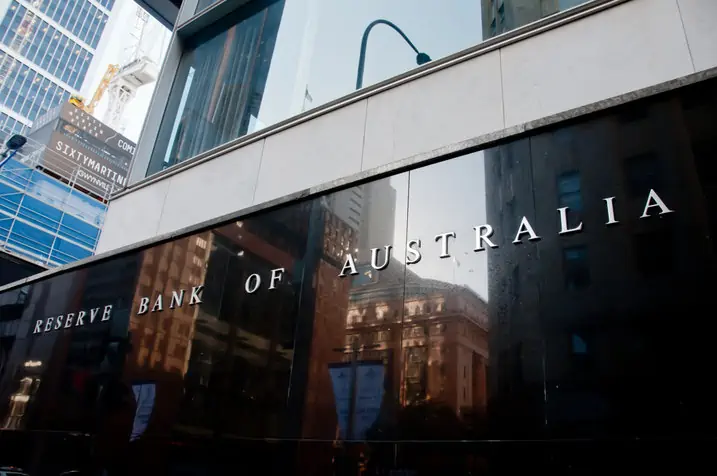In this article:

In its final decision of the year, the Reserve Bank of Australia (RBA) has opted to leave the cash rate unchanged at 4.35%, marking the 13th month since the last rate hike in November 2023.
While the RBA’s decision was widely anticipated, it arrives amidst ongoing global rate cuts and significant movements in Australia’s inflation and economic data.
The RBA in its press release stated that “underlying inflation remains too high”, reiterating their position that the RBA does not expect inflation to return to target range midpoint of 2.5% until 2026.
“The Board is gaining some confidence that inflationary pressures are declining in line with these recent forecasts, but risks remain.”
“Growth in output has been weak. National accounts for the September quarter show that the economy grew by only 0.8 per cent over the past year. Outside of the COVID-19 pandemic, this is the slowest pace of growth since the early 1990s.”
The board admitted that headline inflation has “declined substantially”, however, “underlying inflation is more indicative of inflation momentum, and it remains too high.”
Making Sense of Inflation
Inflation held steady at 2.1% in October, marking the lowest annual rate since July 2021. Yet, this wasn’t enough to spark optimism amongst economists or market predictions of a rate cut in the immediate future.
Those in agreement with the RBA’s current holding pattern argue that the ongoing shortage of workers across the broader economy is preventing the Reserve Bank from considering a rate cut for now. Australian businesses are struggling to produce and sell enough goods or deliver sufficient services to drive growth and support higher wages, which is a critical issue underpinning the hesitancy to adjust rates.
Bouris and Koukoulas took issue with this approach on their recent episode of Property Insights.
Koukoulas said we need to take a step back and look at what the RBA is mandated to do.
“The Reserve Bank wants to reduce the volatility in the economy. They don’t want to hike one week and cut the next and hike again.”
A steady interest rate breeds confidence and certainty for businesses, for property prices and for borrowers, or so the argument goes, says Koukoulas.
“It’s an important objective. They want to be sure that when they do move rates, that inflation (that lovely headline figure of 2.1% annual inflation) isn’t going to be lost in the months ahead, when, say, for example, the electricity subsidy ends if there is a change in government.”
With headline inflation at 2.1%, Koukoulas outlined that a few factors could shift which could cause inflation to shoot right back up. A change in government could see the electricity rebate end, or oil prices could increase sharply in the new year, driving up the cost of petrol. All of a sudden headline inflation could go back up to 3-3.5%, said Koukoulas.
“Then the RBA would be thinking, ‘Oh goodness, we’ve cut rates, and we shouldn’t have.’ That’s why they trim out volatile items and are placing emphasis on the ‘trimmed mean’ of inflation.”
What This Means for Borrowers
Mark Bouris, highlighted the importance of understanding the nuances behind inflation metrics: “The trimmed mean inflation gives the RBA a more sustainable view. It’s not just about the headline figure, but what’s happening beneath that. This informs whether they can start loosening policy or need to maintain the current settings.”
The RBA’s projections suggest inflation may not hit its midpoint target of 2.5% until 2026. However, as Koukoulas pointed out, rate cuts could begin before then if inflation continues its downward trajectory:
“If we see trimmed mean inflation drop to 3.2% or 2.9% in the coming months, we could see the RBA cautiously start reducing rates by 25 basis points at a time.”
“The global context can’t be ignored. While other central banks are cutting rates, Australia’s unique inflation drivers, like electricity subsidies, complicate the picture for the RBA.”
For borrowers, the extended period of higher rates remains challenging. However, there is optimism that the RBA’s long game will stabilise inflation and set the stage for gradual rate reductions in 2025.
Looking Ahead
With 2025 just a few weeks away, all eyes will be on the RBA’s January CPI data, which will heavily influence its February meeting. For now, the RBA remains in a holding pattern, seeking further evidence that inflation pressures are easing sustainably.
As the holiday season nears, you may find time to begin planning for the year ahead. For homeowners and renters alike, navigating financial pressures can feel daunting, but there are practical steps you can take to maintain stability and set yourself up for success in the new year:
- Review Your Budget
Now is a great time to check in with your finances. Assess your current expenses, including housing costs, and identify areas where small adjustments can make a big difference. Remember, even modest savings can help create a buffer for unexpected expenses.
- Stay on Top of Payments
For homeowners, ensuring your mortgage repayments are up to date is critical. If you’re struggling with higher costs, consider contacting your lender or your mortgage broker to discuss options such as repayment holidays or restructuring. For renters, prioritising rent payments and maintaining open communication with your landlord can help prevent issues down the line.
- Plan for the Future
Start the new year with proactive planning. If you’re a homeowner, consider scheduling a loan health check with a mortgage broker to explore refinancing opportunities or better interest rates. Renters might think about strategies for saving toward a future home purchase or reviewing rental agreements for any upcoming lease renewals.
- Focus on the Positives
It’s important to recognise the progress you’ve made this year. Whether it’s paying down debt, building savings, or simply staying afloat during uncertain times, celebrating these wins keeps you motivated for the year ahead.
- Seek Support When Needed
There’s no need to face challenges alone. Financial advisers, mortgage brokers, and community resources are there to offer guidance tailored to your unique circumstances.
Stay tuned for ongoing updates and expert analysis as we head into a new year. If you’d like to get a jump start on your goals for 2025, get in touch with one of our experienced home loan experts today.



